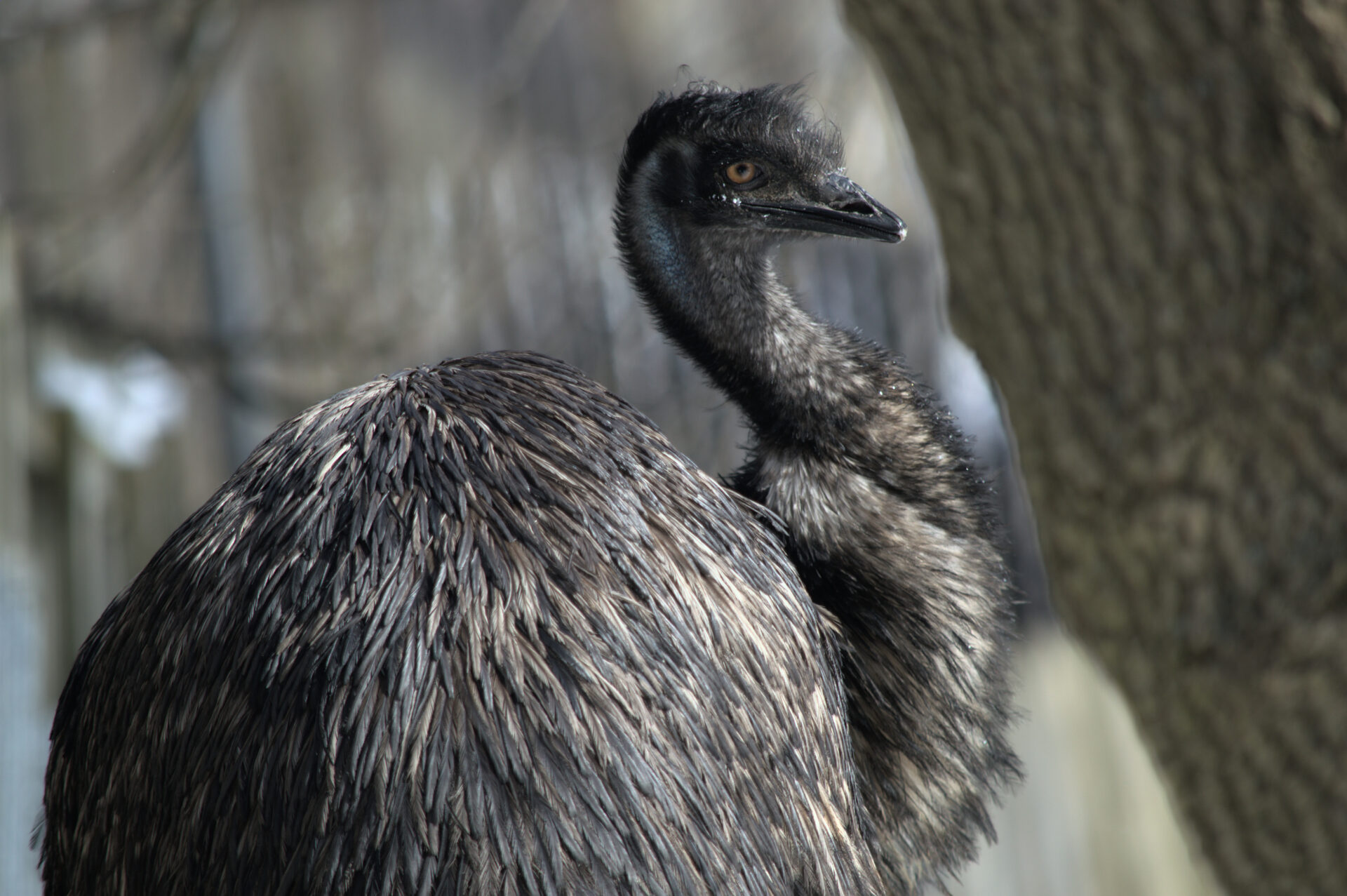Emu

Basic Information:
Scientific Name: Dromaius novaehollandiae
Habitat: Emus can be found in the arid plains and tropical woodlands of mainland Australia.
Diet: Emus are omnivores and mostly eat fruits, seeds, plant shoots, small animals, animals droppings, and insects.
Size: 5.7 feet tall / 4.6 to 5.4 feet long
Weight: 110 to 130 pounds
Lifespan: 10 to 20 years in the wild. Up to 35 years in human care.
Distribution Map:
I.U.C.N. Conservation Status:

What does this mean?
Least Concern – a species determined by the International Union for Conservation of Nature (I.U.C.N.) to be pervasive, abundant, and thriving.
Our Emus:
Diggery (Female) – Estimated Birthdate March 2006
Doo (Female) – Estimated Birthdate March 2006
About Emus:
The second largest bird in the world, emus can be found across the Australian mainland typically near the bush regions. Like all other ratites, they are incapable of flight and – instead – travel by running upwards of 30 miles per hour while using their wings for balance! However, unlike a lot of other birds, their feathers are stiff and can be rattled as a sign of intimidation to predators. In addition to this, they are known for making low, rumbling sounds from a special pouch in their throat. This trill can be heard up to half a mile away! They are vegetarians and feed on grains, grasses, and other plants. And while they are generally non-aggressive due to their lack of predators, they can deliver a powerful kick when threatened which can make them dangerous. While they have been used for their meat by local populations when needed, they often coexist with humans peacefully. That being said, during a particularly dry season in 1932, emus began pillaging local villages for their crops. This led to the declaration of the Great Emu War! This conflict saw the Australian military mobilize to defend local farms from the persistent birds. While it saw some success, it has generally been remembered as a failed effort, and it is widely stated that the emus won the war.
Did You Know?!
- Emu eggs are green and speckled to help them blend into the underbrush of the Australian outback.
- An emu has 2 pairs of eyelids: one is for blinking and the other is to keep dust out.
- A group of emus is called a mob.
- Emus swallow pebbles and small rocks to assist in the grinding of food and to accelerate digestion.
- Male emus build the nest, incubate the eggs, and voraciously defend their chicks, all without the help of the female.
- Emus have 3 forward-facing toes that allow it to grip the ground.
- Female emus will lay between 5 and 20 large, emerald-green eggs in large ground nests. Males will incubate the eggs for about seven weeks without drinking, feeding, defecating, or leaving the nest. During this time, females will often move on and continue mating.
- Emu chicks will stay with the male for 4 to 12 months until they are able to eat on their own.
